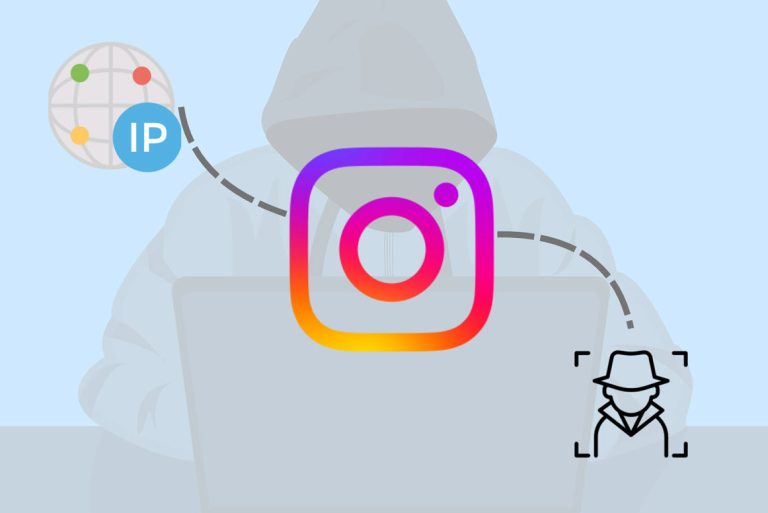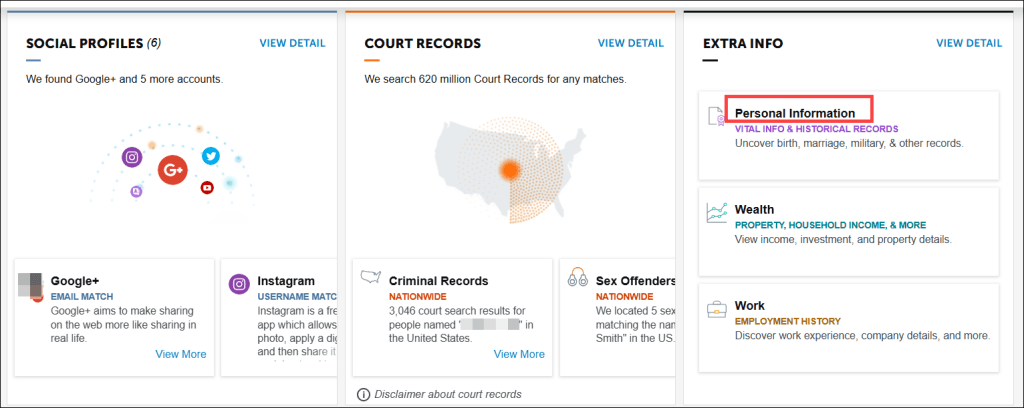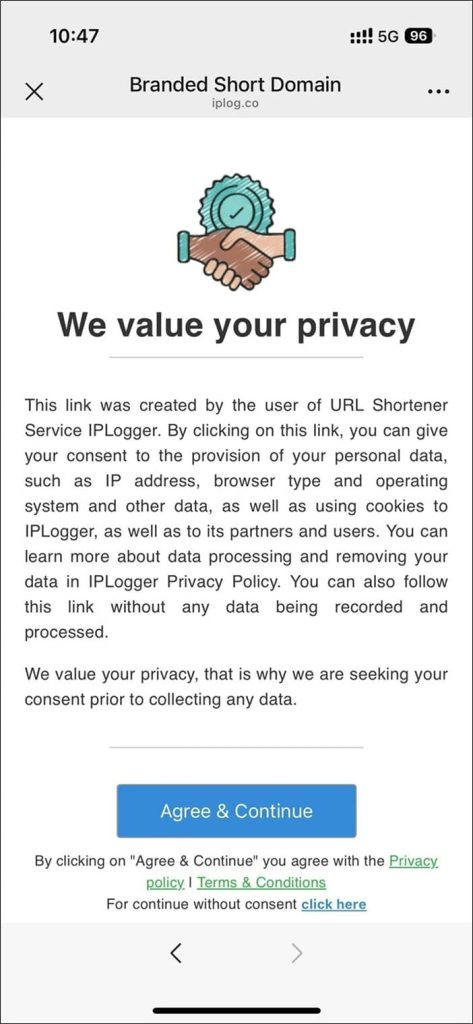How to Find Someone’s IP Address on Instagram

Internet access has become a big part of our daily lives. But while it’s mostly fun and convenient, it’s not uncommon for innocent comments to attract trolls or for anonymous harassers to cross the line, causing real distress. For some, online harassment becomes so intense that it affects their daily lives. Maybe you’re a victim who wants to find out who’s hiding behind the screen. Perhaps you’re worried that trolls might uncover and leak your personal information. Or maybe you’re just curious—can you really find someone’s IP address on a platform like Instagram?
Don’t worry! In this guide, we’ll dive into all your questions and help you understand what’s possible and what’s not when it comes to tracking someone’s IP address on Instagram.
- How to find someone’s location on Instagram
- How to find IP address on Instagram
- How to handle harassment
Can someone find the exact location with the IP address?
The short answer is no, you cannot find an exact location using just an IP address. It only provides an approximate location, like the city or state.
An IP address, short for Internet Protocol address, is like a digital home address for your device. It helps the internet identify where to send or receive information, just like a package needs a “home address” to be delivered to your door. However, unlike a physical home address, you don’t own your IP address, it’s assigned to you by your Internet Service Provider (ISP) and your IP address can be dynamic.
For example, when you are at home, your ISP will assign an IP address to your broadband. When you’re using mobile data outdoors, your IP is assigned by a nearby mobile base station and it will continue to change as you move.
Even if someone obtains your IP address, all they can see when querying is basic information like the ISP’s name, location country, state, or city. It doesn’t reveal your specific street or building.
So if someone wants to threaten you with claims like, “I have your IP address and I’ll find you,” don’t panic. They are bluffing. Instead, focus on safeguarding your full name, phone number, or email address, as these can be more directly tied to you.
> Cover your real IP address with a VPN
> How to handle harassment messages
For users who are curious about the Instagram account’s owner’s location, there are easier ways to find out without an IP address. The next section will show you how to find someone’s location on Instagram.
How to find someone’s location on Instagram
Asking the account owner politely through comments, direct messages, or live broadcasts would be a better way to find their location on Instagram, if you prefer to find it on your own, some built-in features and methods can help you learn more about an account’s general location:
1. Check the account details
- Go to the Instagram account profile.
- Tap the three dots in the top right corner of the profile.

- Select About this account.
If enabled, you’ll see the country where the account was created, along with “Date joined”.
Note: If this information isn’t displayed, the account owner may have chosen not to make it public.
2. Look for location tags on posts
Instagram allows users to add location to posts stories, threads, or reels after uploading or taking a photo or video. To find out where someone has been, check their content to see if they’ve added a location tag. By clicking on the location tag, you can view the specific location.
Note: Instagram only allows tagging existing locations in posts, meaning users can’t directly create custom location tags. Therefore, there’s a possibility that the location tags people use may not always match their actual location – they could tag a random or unrelated place, or maybe some nearby places.
> How to turn off Instagram location service
3. Reverse image search
What if no location tag or text indicates where they are? If they use photos or videos to record the place, you may have a chance to find out where they’ve been. Use tools like Google reverse image search to identify the place where the content was captured.
4. Use people search tool
If you want to know more detailed information about an account owner, such as their possible residence, using a people search tool could be your better option. For example, a Reddit user once asked how to use an IP address to find the location of his wife’s cheating partner on Instagram. He wanted to confirm if this person was in the same city. In such cases, a people search tool is often a more practical and efficient choice.
With tools like Spokeo, you can perform a name search to receive a detailed background report.
1. Go to Spokeo, and choose the search type according to the information you have.
2. Unlock the report. This report might include the person’s age, location history, possible phone numbers, social media accounts, and even criminal records (if available). Spokeo can help you gather valuable information with just a single search– saving you the time and effort of manual investigation.

If all you have is a username, Spokeo’s username search can help you uncover other possible social media accounts linked to the same person, potentially leading to more clues about their identity and whereabouts.

In conclusion, people search tools can be useful for finding the person behind an Instagram account and obtaining associated details, such as their location and contact information. With just a few clicks, you could uncover the truth behind the screen.
However, if you’re dealing with harassment or stalking whose accounts are often empty or anonymous, then the next part may help.
How to find IP address on Instagram
To protect users’ privacy, Instagram doesn’t share IP addresses publicly, this information is not available through public APIs or services. What’s more, attempting to access someone’s IP address without their consent could be illegal in many jurisdictions and result in legal consequences. Please think carefully before taking action.
1. Seek legal support
If you are a victim of online harassment or fraud, reporting to the police is your go-to option. Law enforcement can request IP addresses and other account information directly from Instagram through legal channels. Platforms like Instagram not only master IP information but also personal information like names, emails, or phone numbers, the various data they obtain can probably restore most of a person’s information. The platform will only provide detailed personnel information to law enforcement authorities following the procedures prescribed by law. Therefore, reporting to the police officers should be your best course of action.
2. Use clickable links
If the authorities are unable to assist, which is quite common, and you wish to take matters into your own hands, you can try creating a trackable link using IP tools like IP Logger or Grabify. These tools allow you to generate a short link that logs the IP addresses of anyone who clicks on it. Once the link is clicked, you can export the data to retrieve information such as IP addresses, the corresponding country/state/city, browser type, and ISP name.
Here’s how:
- Visit an IP tracking service website, e.g. IPLogger.
- Enter a valid URL to create a short link. You can use online images, files, news links, etc., as bait.
IP Logger allows you to mask the link with an extension to make it appear less suspicious. If you have a personal domain, it’s better to use it. Otherwise, you’ll need to rely on their standard domains to create the link.
- Copy your logger link and send it to the target person.
- Click Export data and click Create. Wait for the task complete.

- Download the CSV file and open it. If they click on the link, you’ll receive their IP address and the general location details (city, state, country).

To avoid potential legal issues, IP Logger offers Consent collection option. When you enable it, the recipient will see the statement first and need to click the Agree & Continue button to see the link content. Without their consent, IP Logger won’t collect their IP addresses.

However, this method has limitations:
Getting the target to see and click the link can be challenging. Instagram regularly updates its rules to maintain platform safety. While Instagram typically does not block links sent via direct messages (DMs), links that seem suspicious or trigger spam prevention measures may be flagged or blocked. If this happens, you may receive a “link not allowed” error.
Even if the link is successfully sent, they might inspect the link beforehand if the target is particularly vigilant. What’s more, Instagram might appear the link with a preview image in the DM, you have to consider this when choosing a file to create the link. The unsuitable content could stop the target from clicking, or they may use additional privacy measures, such as a VPN.
If the target is using a VPN, their IP address will likely show a different location, making tracking harder. For example, if the IP geolocation points to a country significantly different from what you expect, it’s likely that a VPN is involved. If you can get the target to click on the link multiple times, rapidly changing IP addresses or locations on the record can indicate VPN activity. If you confirm that a VPN is being used, you may need to explore alternative methods to gather information about the person.
This method carries some risks. If Instagram detects suspicious activity or believes you’re violating its terms of service, your account could be flagged or even banned. In the worst-case scenario, engaging in such activities might result in legal consequences.
To understand the legal risks of this method, check out Is it legal to find someone’s IP address? You can also explore successful cases in the Additional Tips section for inspiration.
Additional Tips:
Some users have successfully found the IP addresses of the harasser and identified who they are. They created a custom website to lure harassers to leave their digital footprint. By employing communication strategies, they convinced the harasser to visit the website and leave information, such as an IP address and email. However, remember that an IP address is only one clue among many for identifying someone.
Don’t fixate solely on obtaining the IP address—explore other methods to collect additional information. Tools like Spokeo and BeenVerified can help by allowing you to search for names, perform reverse email lookups, or run reverse phone number searches to identify possible owners. For example, one user managed to identify a harasser by obtaining their email.
The key is to gather as many fragments of information as possible. Once you have enough pieces, the truth may be closer than you think.
Methods that don’t work
1. Online Instagram location tracker
Some posts claim there are online tools that can track Instagram user’s location by simply entering their username or profile link, but that’s not true. There’s no such tool, and you can’t find a working tool, tools that claim to have this function could be scams.
2. Command Prompt tricks
Some posts suggest using commands like netstat -an to find an Instagram account IP address. This only shows the IPs of websites or servers that your computer is directly connected to. If you open the person’s Instagram profile and use this command prompt, you’ll see the IP address of Instagram’s servers, but not the specific Instagram account’s IP address.
How to handle harassment
If you’re being harassed, we recommend you report the account to the platform. Then block the account, don’t reply to them but ignore it.
If the person continues to create accounts to harass you, and the threats escalate, things are getting different. We suggest you take screenshots of messages or accounts for future reference and consider filing a police report. Documenting the incidents and reporting them to law enforcement may help you get rid of this situation.
When you encounter harassment, it’s ok to feel fear, anger, and anxiety, you need to ask your friends and families for help, not only for realistic suggestions but also for emotional support.
In addition to the above operations, you can also use a strong attitude to fight back and scare the harasser, just like a Reddit user did:
I told the newest account follower that every time he creates a new account to harass me, I screenshot the convo and add it to a file I’ve created at the police station, and when he’s eventually found he’s going to have a lot of internet stalking charges and death threats to answer for. He immediately deleted his account.
FAQ:
Finding someone’s IP address is generally not illegal, as IP addresses are considered public information used in online communication. If the person willingly shares their IP address or you obtain it through legitimate means—such as analyzing your own website’s traffic—it is typically legal.
However, using unauthorized tools, hacking, or deceptive methods (like phishing or sending malicious links) to obtain an IP address without consent is likely illegal. Even if the method itself isn’t explicitly unlawful, using the IP address for harmful purposes, such as stalking or harassment, is against the law.
While IP addresses aren’t as private as sensitive personal data, many jurisdictions still consider them part of an individual’s online privacy. Misusing this information could result in violations of privacy laws. If you’re unsure about the legality of your actions, it’s always best to consult a legal professional or seek advice from the appropriate authorities.
To safeguard your real IP address, using a VPN is an effective option. A VPN masks your IP address, adding an extra layer of security. However, it’s important to choose a VPN with a good reputation. Free VPNs may fail to fully protect your online footprint and could sell your personal information, such as your browsing activities, to third parties.
Moreover, free tools typically lack robust encryption, leaving your data vulnerable if someone uses a packet sniffer to intercept your traffic. Considering these factors, Norton VPN is a strong choice. It offers advanced encryption, a strict no-log policy to ensure your online activities are not tracked, logged, or saved, and real-time protection against scams, viruses, malware, and hacking.
Final words
Dealing with online harassment or tracking down an anonymous user can be challenging and emotionally draining. While methods like checking Instagram’s built-in features, analyzing posts, or using tools to find IP addresses might provide clues, they should always be used responsibly and within legal boundaries. Remember, an IP address can only give a rough location and is not a tool for pinpointing someone’s exact whereabouts.
If you’re facing harassment, prioritize your safety by reporting the issue to Instagram, blocking the account, and seeking help from law enforcement when necessary. No one should endure threats or abusive behavior online.
Lastly, always protect your own privacy by being cautious about the information you share online. Use tools like VPNs to safeguard your digital identity and avoid clicking suspicious links. The internet can be a wonderful place to connect with others, but staying informed and cautious is key to keeping it safe and positive.

 View all of Iris Zheng's posts.
View all of Iris Zheng's posts.




